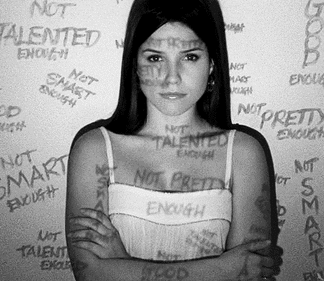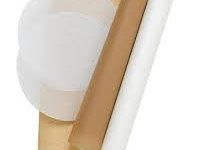
The Beauty Myth: How Standards of Beauty Are Used Against Women
The Beauty Myth: How Standards of Beauty Are Used Against Women
Feminists care about everything that is related to women. They seek crisis and problems that women may suffer in their life. They attempt to rise the women’s awareness of the forms of discrimination that are practiced on them. One of these forms is the standards of beauty; in which that there is an ideal image of women which they have been expected to have from almost everyone. Some feminists may believe that beauty myth is a part of a system that reinforce male dominance; in which the beauty standards are subject of scrutiny that women face but men do not, and it is practiced mostly by men on them; to be more accurate they do not face it at the same level that women do. One of the external sources that impose the standards of beauty on women is social media. Feminists try to reveal the failure of such belief by defining it, highlighting how does it fossilize on people’s minds, highlighting its consequences on women, and attempting to provide solutions for eliminate it.
The beauty Myth is a powerful force that keeps women distracted by their physical appearance. It also provides both men and women a way to judge and limit women due to their physical appearance. There is a patriarchic cultural notion of ‘beauty’ that shaped the expected representation of women. The feminine beauty ideal; which includes female body shape, big eyes, colored eyes, blond hair, and more, is used to blame women for their failure to achieve and conform it.
One of the commercial space that commodities the standards of beauty is social media. Almost every website, account, or page on social media that is designed for women puts a picture of a woman who has a perfect body on its cover, and its content is all about how to be beautiful, how did some women achieve losing weight, and how other women can as well. It is also predictable to post recommendation of dentist doctors to get the perfect organized teeth, names of brands for the best lenses that provide a natural look with colored eyes, names of salons for the best face treatments, names of brands for the best hair extensions, the best clothes, the best lashes and more. Unfortunately, the majority of females influencers on social media are responsible for making the beauty standards fossilized on the people’s minds especially women’s minds. They try make them aim to perfection and to not accept the way they are by seeking the ideal physical appearance. Even their own pictures with perfect looks are a main cause of attempting women to be a copy of them. Furthermore, the profiles of female actors of TV shows and movies on social media can be also have a big impact on women; in which they lead women to feel pressured to look just as desirable in order to meet often unrealistic beauty standards. Under those circumstances, most women start having a belief that is in order to have perfect marriage, happy life, or rewarding careers, they should imitate such women.
There are many consequences for this on women; in which feminine beauty ideals are rooted in hetero-normative beliefs, and have an influence on women. Such belief may cause pressure for women by trying conform to a certain definition of ‘beauty’ can have psychological effects on women, such as: depression, eating disorders, and low self-esteem starting from an adolescent age and continuing to adulthood. Moreover, the beauty standards for the perfect body shape of women, often are neither healthy nor achievable through diet or exercises; in which in order to achieve such goal this might cost women financial and physical sacrifices. Some women may also face diseases as a result of the self-starvation that they practice in order to achieve losing weight. Furthermore, physical appearance becomes a central feature of hiring, evaluation and promotion. As a result, most women pay for the beauty more attention than their own skills and personalities. Consequently, these beauty standards destroy the self-esteem of women, and give them negative energy and unnecessary tension that might lead to depression.
All in all, feminists attempt to put an end for this whole belief by trying to reconstruction these beauty standards and make them more realistic or even get rid of the whole concept. They usually post blogs, make documents, write articles, make videos about it, in order to deliver for women that they should love themselves in the way they are, recognize that their physical appearance is meant to make them unique, and do not allow the social media take them apart. They also try to highlight the fact that perfection does not exist on earth by posting pictures of them without any kind of make-up with the hash tag ‘#Nofilters’. They call all women to realize the importance of emphasizing their talents, hobbies, and special treats, rather than their physical appearance. They want to fight the idea that women become blind by these standards, shutter the ideal image of women, rescue them of the prison that they put themselves in, make them escape of such illusionary standards, end their struggle because of such belief, make them aware of their own self-worth, stand up in front of anyone who might judge them according to their physical appearance, and ask for the respect that they should have. Naomi Wolf writes a nonfiction book; which is The Beauty Myth. Wolf says in it that women should have “the choice to do whatever we want with our faces and bodies without being punished by an ideology that is using attitudes, economic pressure, and even legal judgments regarding women’s appearance to undermine us psychologically and politically”. Her book gains a praise from many feminists; in which the second-wave feminist Germaine Greer wrote that The Beauty Myth was “the most important feminist publication since The Female Eunuch”, and Gloria Steinem wrote, “The Beauty Myth is a smart, angry, insightful book, and a clarion call to freedom. Every woman should read it.” British novelist Fay Weldon called the book “essential reading for the New Woman”, and Betty Friedan wrote in Allure magazine that “The Beauty Myth and the controversy it is eliciting could be a hopeful sign of a new surge of feminist consciousness.” With the publication of The Beauty Myth, Wolf became a leading spokesperson of what was later described as the third wave of the feminist movement.










